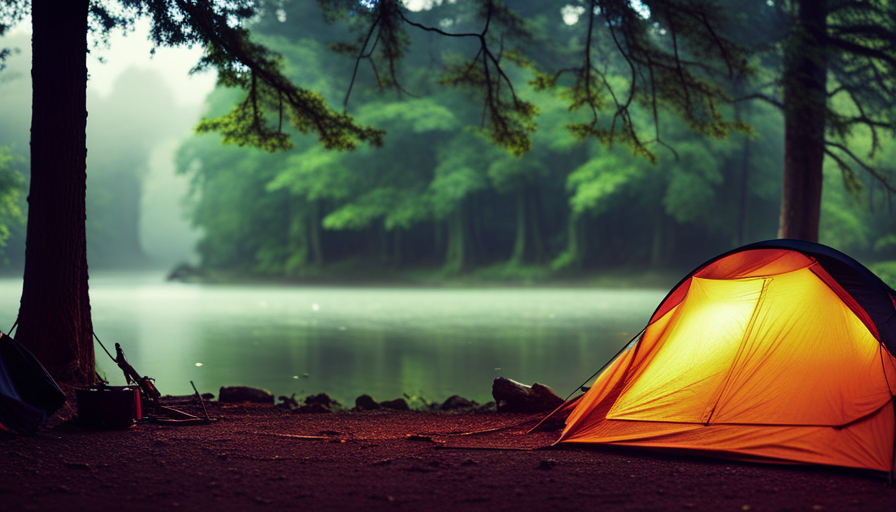Camping in the rain can be a daunting experience, but with the right preparation and strategy, it can still be a fun and exciting adventure. Whether you’re a seasoned camper or a beginner, it’s important to have the necessary knowledge and skills to set up your tent in wet weather.
In this article, we’ll explore 15 tips for setting up your tent in the rain, including the importance of setting up a tarp first, choosing a good spot, and having appropriate rain gear.
While camping in the rain can be a challenge, it can also be an opportunity to experience the great outdoors in a new and unique way. With the right mindset and preparation, you can enjoy the peaceful sound of raindrops falling on your tent and the fresh smell of the surrounding forest.
From choosing a suitable campsite to packing the right gear, we’ll cover everything you need to know to make the most of your rainy day camping experience.
So, grab your raincoat and let’s dive into the world of rainy day camping!
Preparing for Rainy Camping
In order to successfully set up camp in the rain, it is imperative to prepare for inclement weather by practicing setting up rain gear and tents, packing strategically, and utilizing camping gadgets, as outlined in the guide to setting up a tent in the rain. This means having a plan before heading out, trying out different methods for setting up a tarp and tent, and making a blueprint of the plan to share with camping partners.
It also means packing your backpack or car in a way that allows for easy access to everything you need, and using bushcraft skills and tools to help make your trip more comfortable.
Preparing for rainy camping also involves practicing setting up your rain gear and tent before going on your trip. This will help you feel more confident in your ability to set up camp in the rain and ensure that you have all the necessary gear.
Additionally, using outdoor party games and learning several methods for showering while camping can make your trip more enjoyable, even in inclement weather.
With proper preparation and strategy, anyone can learn how to make camp in wet weather and have a successful camping trip.
Challenges and Solutions
The challenges of establishing a shelter during precipitation can make it difficult to navigate and create a comfortable outdoor living space. The constant rain can be uncomfortable and frustrating, especially for inexperienced campers. One of the major challenges is finding a suitable location for the tent. The ground may be wet and muddy, and the rain can make it difficult to see the best spot for setting up camp.
Additionally, the rain can make it difficult to move around and unpack gear, as everything gets wet and slippery.
Another challenge of setting up camp in the rain is the risk of hypothermia and other health issues. Being wet and cold for an extended period of time can lead to serious health problems, including hypothermia. To avoid this, it is important to have proper rain gear that will keep you dry and warm. In addition, it is crucial to have a backup plan in case the weather gets too severe. This could include waiting out the storm in your car or a nearby shelter, or packing up and moving to a safer location.
By being prepared and having a plan, campers can minimize the challenges of setting up camp in the rain and enjoy a safe and comfortable outdoor experience.
Author’s Experience and Tips
Dena Haines, the co-founder and blogger on GudGear, shares her experience and expert tips for successfully setting up a tent during wet weather, highlighting the importance of proper planning and preparation to avoid potential challenges.
She emphasizes the need for selecting a good spot and setting up a tarp first. Haines also recommends wearing appropriate footwear and rain gear for personal protection. Furthermore, she suggests selecting a single-wall tent or waterproof bivvy, which can make the setup process easier and faster.
Haines also advises campers to practice setting up their gear and tent before going on their trip. This helps them familiarize themselves with the equipment and identify any issues that may arise during the actual setup. She also recommends sharing a blueprint of the plan with camping partners to ensure everyone is on the same page.
Haines stresses that anyone can learn how to make camp in wet weather with some preparation and strategy, making the experience less challenging and more enjoyable.

